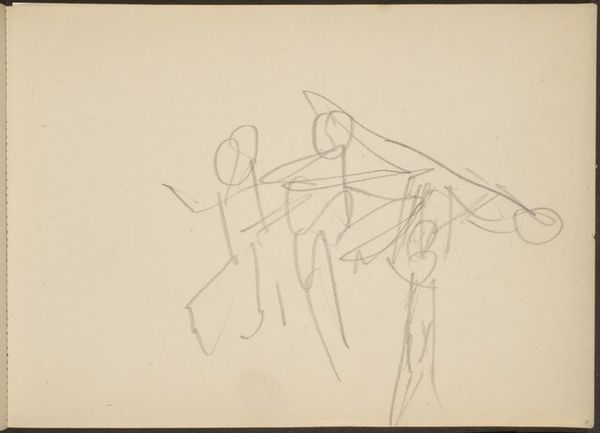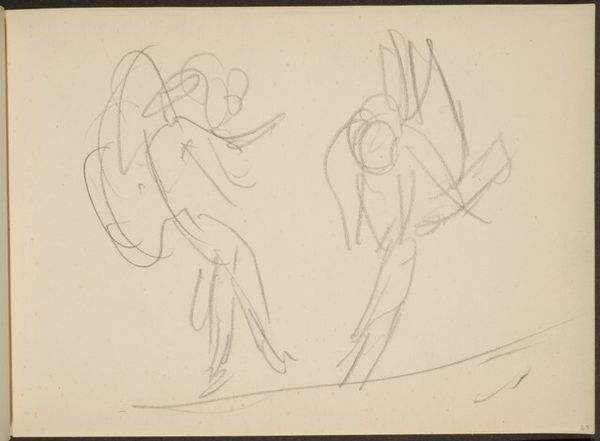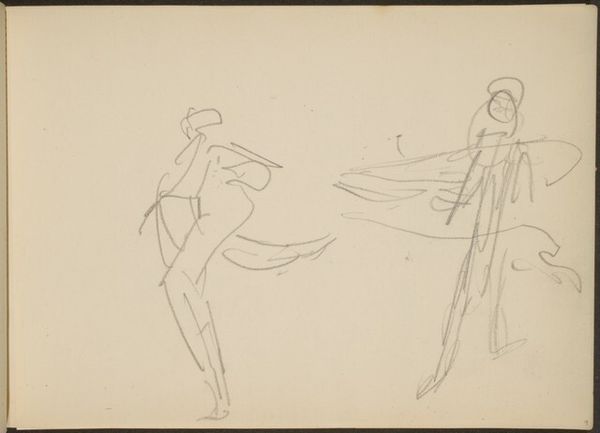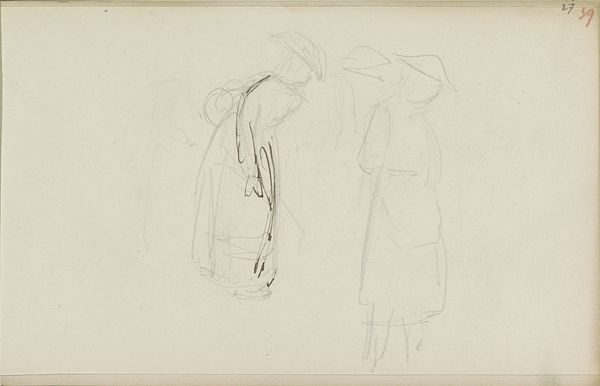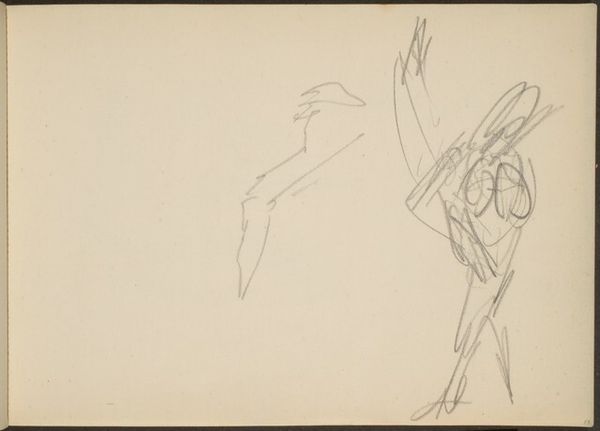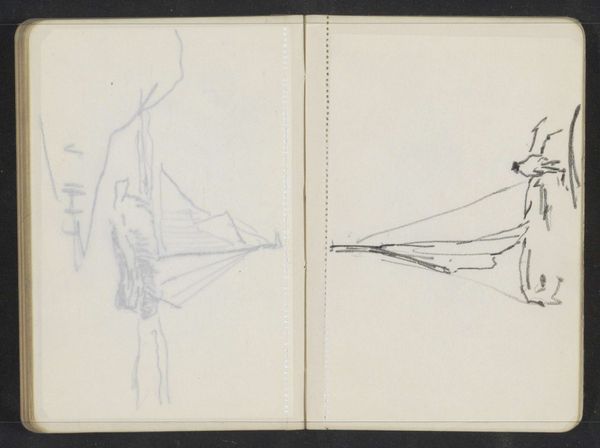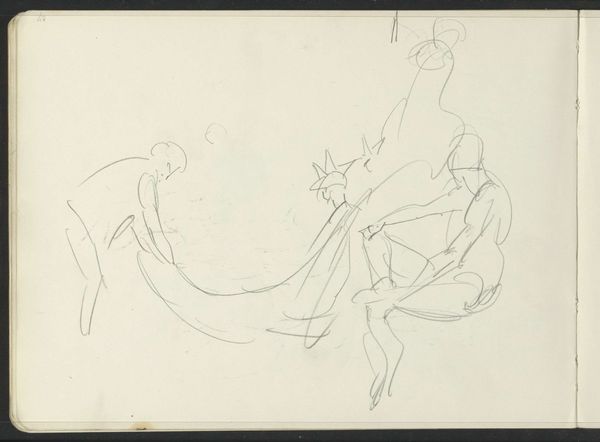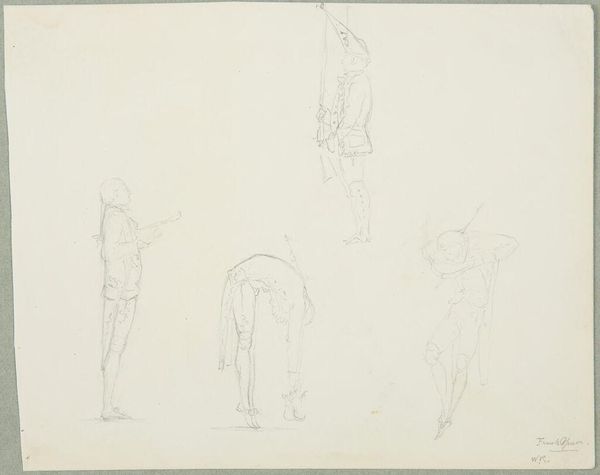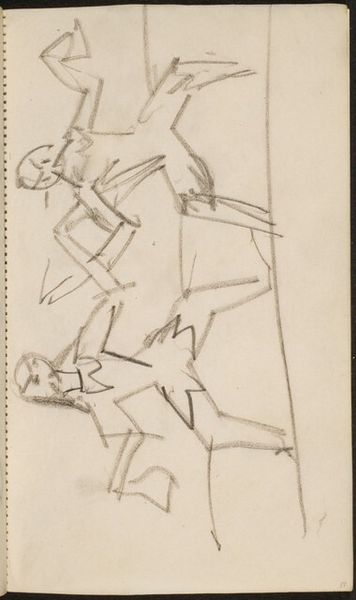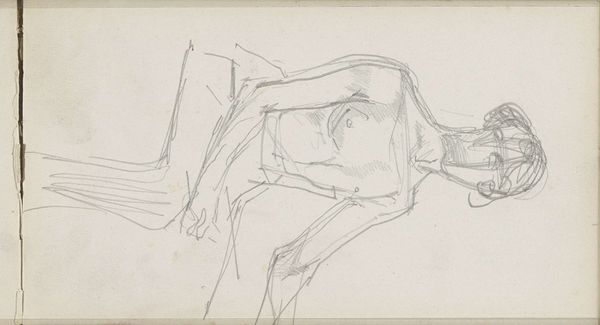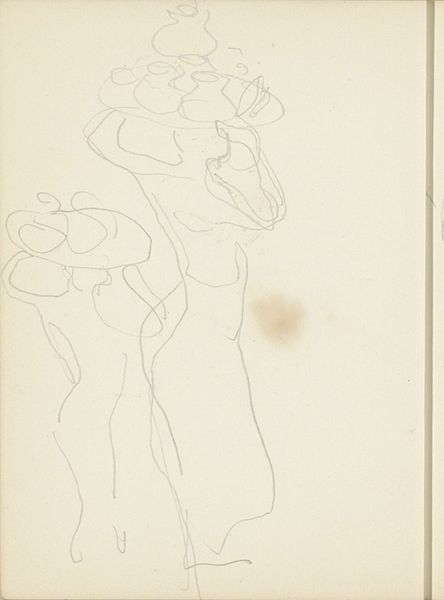![Drei Figuren, wohl Tänzer (Three Figures) [p. 69] by Max Beckmann](/_next/image?url=https%3A%2F%2Fd2w8kbdekdi1gv.cloudfront.net%2FeyJidWNrZXQiOiAiYXJ0ZXJhLWltYWdlcy1idWNrZXQiLCAia2V5IjogImFydHdvcmtzL2IwNTNjODNhLWE1NmEtNGJiMC05YzEyLWQ3Mjk5OTAwODU4YS9iMDUzYzgzYS1hNTZhLTRiYjAtOWMxMi1kNzI5OTkwMDg1OGFfZnVsbC5qcGciLCAiZWRpdHMiOiB7InJlc2l6ZSI6IHsid2lkdGgiOiAxOTIwLCAiaGVpZ2h0IjogMTkyMCwgImZpdCI6ICJpbnNpZGUifX19&w=1920&q=75)
drawing
#
drawing
#
german-expressionism
#
figuration
#
line
Dimensions: overall: 12.5 x 19 cm (4 15/16 x 7 1/2 in.)
Copyright: National Gallery of Art: CC0 1.0
Curator: This expressive sketch is titled "Three Figures, wohl Tänzer," or "Three Figures, probably Dancers," a piece by Max Beckmann. The date is unknown, but its energetic lines typify his German Expressionist style. Editor: My first impression is the raw immediacy. It’s like a fleeting moment captured, almost scribbled, full of movement and a sense of the theatrical. It’s not polished; it's urgent. Curator: Absolutely, it possesses that inherent unfinished quality so typical of many sketches of the period, as though Beckmann’s hand couldn’t quite keep up with the vision. Think of the German cultural landscape post-World War I—the frenzied nightlife and avant-garde performances served as an incubator of art like this. Editor: It’s as though he’s trying to trap something just out of reach. Do you feel that tension, like their movements are somehow restricted despite the impression of dance? There’s something about the angled limbs that suggests more a feeling of struggle, not pleasure. Curator: It's definitely a feature of his oeuvre to imbue figures, even those caught mid-dance, with a degree of social critique, capturing, as he often did, the sense of fractured realities and lurking menace permeating society. And there’s something really arresting about his minimalist technique: those quick, assured lines convey depth. It really makes you wonder what sort of emotional state would lead to capturing such raw and angular outlines of what could have been a gentle activity like dance. Editor: Indeed, perhaps it is also a comment on dance as a display. We see only the skeleton, the form, the outline but with none of the life that should accompany dance. His unique way of making an aesthetic commentary through minimal but precise line use and careful control over the mood is one of the hallmarks of Expressionist thinking. Curator: What stands out most for me, stepping back from the history for a moment, is how a few sparse lines can tell such a complicated story, inviting speculation, drawing me into the energy of the street, or performance of that era, despite the passage of time. Editor: And for me, it reinforces the idea that art can be powerful, even in its simplest, most fragmented forms. These three figures leave a disquieting shadow of their dance long after they have left the stage.
Comments
No comments
Be the first to comment and join the conversation on the ultimate creative platform.
